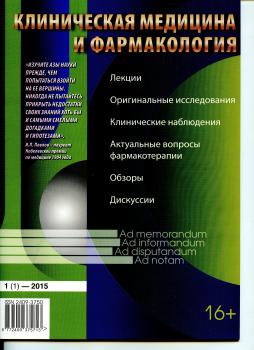Russian Federation
Moskva, Moscow, Russian Federation
Tula, Tula, Russian Federation
Tula, Tula, Russian Federation
The purpose of the work. To show the expediency of using a complex DPN therapy with thio-gammoy-600 in combination with TPP, B12-ankerman and febuxostat. Materials and research methods. The study involved 28 male patients suffering from DM2 aged 56-77 years, with an av-erage age of 64.6±0.7 years. The initial values of average fasting blood glucose were 7.8 ± 1.52 mmol/l, glycosylated hemoglobin 7.4 ± 0.13%. Two groups were identified: group 1 (main) – 14 people and group 2 (control) - 16 people. In group 2, basic DPN therapy was used (thiogamma 600 mg/day for 4 months). For the first 14 days, the drug was administered intravenously, and then administered orally. In group 1, in addition to basic DPN therapy, B12-ankerman and febuxostat (adenuric) – 80 mg/day were received. TPP was carried out on a portable device TPP-03 for 15 minutes daily. This treatment regimen was used for 4 months. The assessment of the quality of life (QL) was carried out using the MOS SF-36 questionnaire. Results and their discussion. Four months after the start of therapy, more pronounced changes were observed in patients of the first group. The total score of the NSS scale in this group increased by 28.9%, and in group 2 - by 18.8%. The positive effect of therapy with adenuric and TES on the course of DPN shows that the use of this treatment will naturally lead to an improve-ment in the quality of life of patients, the dynamics of which was studied according to the results of the SF-36 questionnaire.
type 2 diabetes mellitus, diabetic polyneuropathy, thioctic acid, vitamin B12 (ankerman), low-energy laser radiation, laser phoresis, gout, febuxostat.
1. Ametov A.S. Diabeticheskaya polineyropatiya - ot profilaktiki k patogenetiche-ski obosnovannomu lecheniyu. Remedium. 2021. №2. S. 79-80.
2. Dadasheva M.N., Gorenkov R.V., Dadasheva K.N. Rannyaya diagnostika i sovremennye aspekty lecheniya diabeticheskoy polineyropatii // Trudnyy pacient. 2020. T. 18. № 4. S. 6-9.
3. Karakulova Yu.V., Filimonova T.A., Karakulov A.O. Sposob prognozirovaniya tya-zhelogo techeniya diabeticheskoy polineyropatii i razvitiya sindroma diabeticheskoy sto-py. Patent na izobretenie RU 2687978 S1. 17.05.2019. Zayavka № 2018135934 ot 10.10.2018.
4. Malygin A.V., Hadarcev A.A., Tokarev A.R., Naumova E.M., Valentinov B.G., Tru-sov S.V. Transkranial'naya elektrostimulyaciya / Pod red. V.P. Lebedeva, 2021. 224 s.
5. Putilina M.V. Diabeticheskaya polineyropatiya. osobennosti differencial'noy diagnostiki i terapii // Trudnyy pacient. 2020. T. 18. № 3. S. 8-12.
6. Sorokin Yu.N., Chernikova I.V., Sorokina E.Yu. Klinicheskie sindromy porazhe-niya nervnoy sistemy pri deficite vitamina V12 // Universitetskaya klinika. 2017. T. 13, № 1. S. 75-79.
7. Sorokina Yu.A., Chechevichkina M.A., Beresneva T.L. Vliyanie saharosnizhayuschih preparatov i preparatov dlya lecheniya diabeticheskoy polineyropatii na lechenie bolevogo sindroma // Mezhdunarodnyy nauchno-issledovatel'skiy zhurnal. 2019. № 2 (80). S. 87- 91.
8. Frolkov V.K., Marchenkova L.A., Kuz'minov G.G. Mezodiennefal'naya modulyaciya v kompleksnoy terapii diabeticheskoy polineyropatii // Fizioterapevt. 2020. № 6. S. 50-57.
9. Shiralieva R.K., Geydarova N.G., Ahmedova Z.G., Orudzheva S.R. Rol' gormona adiponektina v razvitii diabeticheskoy polineyropatii // Nacional'nyy zhurnal nevro-logii. 2017. T. 1. № 12. S. 65-70.
10. Schepankevich L.A., Tanashyan M.M., Nikolaev Yu.A., Novikova E.G., Pinhasov B.B., Pervuninskaya M.A., Antonova KV. Bolevaya forma diabeticheskoy polineyropatii: fokus na uluchshenie kachestva zhizni pacienta // Zhurnal nevrologii i psihiatrii im. S.S. Kor-sakova. 2019. T. 119, № 5. S. 76-79.








